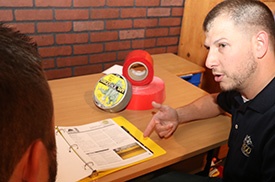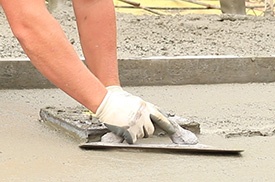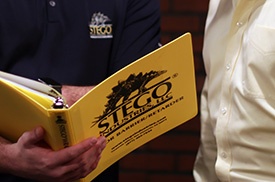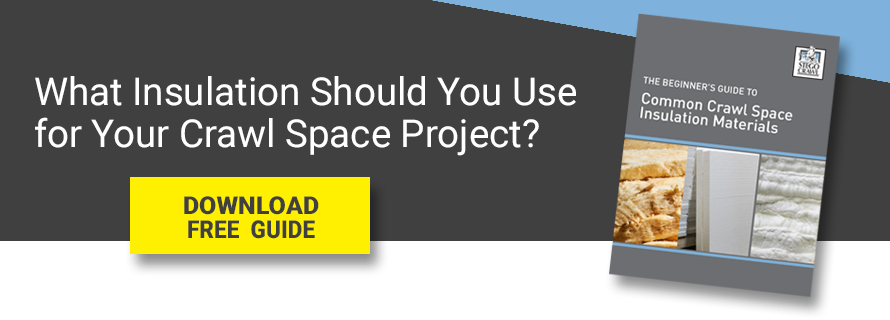What to Know Before Installing Fiberglass Insulation in a Crawl Space
.png?width=720&height=378&name=Insulation-Crawl-Space-1200x630px%20(1).png)
I go to a lot of industry conferences. While many of them feature headliners and industry-leading keynote speakers, the people I enjoy speaking to the most are the contractors.
Contractors’ real-world stories are the true test lab for determining what really works in the field and what doesn’t. One story I’ve heard many times is about when contractors find failed or improperly installed fiberglass insulation in customers’ damp and moldy crawl spaces.
Despite being the most common choice for insulation in the world, fiberglass insulation’s use in crawl spaces is still a hotly debated topic. Many builders like using fiberglass because it’s one of the least expensive forms of insulation (typically running $0.50 - $1.50 per square foot), it’s easy to install, and requires no specialized equipment or training—it’s simply a matter of rolling it out and cutting to fit.
However, despite its ease and accessibility, many contractors I meet express concerns about the fiberglass insulation they’re seeing in crawl spaces.
The Problems with Fiberglass Insulation in Crawl Spaces
While fiberglass actually doesn’t absorb moisture (the individual fibers are made from water and recycled glass), it does hold moisture, which can be very bad in the crawl space environment.
When this happens, the insulation’s pores fill with water, and because water more readily transfers temperature changes, it loses its ability to reduce thermal transfer. That is, its utility and performance as an insulation material (or R-value) suffers. Over time, the moisture-laden insulation will become heavy and sag away from its contact point. Mold can begin growing on the surrounding materials.
This is especially true given the makeup of fiberglass insulation – fluffy and soft, similar to cotton candy – which acts as a filter for dirt, dust, and pollutants, which are additional food sources for mold. In other words, once your fiberglass insulation is wet, it is probably doing more harm than good.
Some Insulation Basics
Many types of insulation can be used to limit heat transfer between the inside and outside of the home. These include:
- fiberglass (which is generally available in batts or blankets, but can also be blown in)
- blown-in cellulose
- spray foam
- mineral wool
- rigid foam board, such as expanded polystyrene (EPS), extruded polystyrene (XPS), or polyisocyanurate (polyiso)
The composition of these products may vary, but they all are made of materials and use air spaces in their design to slow down the transfer of heat.
Air, as well as things like foam, glass, recycled newspaper (that’s cellulose), and rock (mineral wool) are all poor conductors of heat. Heat moves from warm to cool, so it’s naturally trying to find its way into a cool home when it’s hot outside and escape when it’s cold outside . When installed at the home’s envelope between the outside and inside, insulation is what helps keep the home cooler in the summer and warmer in the winter. Home insulation is critical to the comfort and energy efficiency of a home’s HVAC system.
So, what works best in a crawl space? The answer is not cut and dry (no pun intended).
First, let’s look at where insulation may be in a crawl space. For this discussion, we’ll focus on the floor joists/subfloor and the perimeter foundation wall. Insulation is necessary or may be useful in other spots too, like the rim joist, over the exposed ground, on the access door, and around ducts and plumbing pipes.
Generally, fiberglass insulation is used between floor joists at the subfloor of the crawl space. This is most common when a crawl space is vented to the outside. In this traditional approach, the crawl space is outside the thermal envelope of the home (treated more like an exterior space), so the insulation needs to separate the crawl space from the living space above the floor framing. This is where contractors I talk to see the most problems, because vented crawl spaces are prone to allowing moist outside air in.
Insulation is most often used on perimeter walls when the crawl space is unvented (vents sealed or omitted to begin with) as the crawl space is now included within the thermal envelope and treated more like the rest of the home – sealed to the outside and air conditioned or controlled with mechanical equipment.
Choosing Between Fiberglass and Other Insulation
Given crawl spaces are typically mostly below-grade, the most common insulation for contractors beyond fiberglass are rigid foam boards and spray foam. Like fiberglass insulation, there are pros and cons to each. While rigid foam boards and spray foam generally do better at resisting water absorption, they are also either more costly or require more skill to install.
Here is a little more information about rigid foam board and spray foam:
Rigid Foam Board ($2.00 - $2.75/ft2): Common options include XPS, EPS, and Polyiso. Each comes in dense, yet lightweight preformed sheets (typically 4’ x 8’). EPS has a more open cell structure to allow for drying, while XPS and Polyiso have a tighter cell structure to resist moisture. They must be cut to size to fit and attached securely at perimeter walls. If you select rigid boards that aren’t rated for fire, many jurisdictions will require them to be covered with a fire retardant material such as drywall, which increases the cost significantly.
Spray Foam ($3.95-5.35/sq ft): open and closed-cell spray foam is a two-part polyurethane foam that expands and hardens after application. It is a popular choice in crawl spaces, given its ability to fill tight or difficult to reach areas. Spray foam offers a great R-value and acts as an air barrier as well. It generally has the highest cost of all the insulation options and generally needs a professional to install when used broadly at the subfloor or foundation wall.
Keep in mind, spray foam is difficult to remove and should also be applied to dry wood. We are also now seeing mineral wool used in crawl spaces. Although similar to fiberglass in some ways (uses stone instead of glass), mineral wool is better at resisting moisture and is naturally fire retardant.
So what’s the best option? In an article in Fine Homebuilding on the use of fiberglass insulation in homes, Andre Desjarlais, the program manager for Building Envelope Research at Oak Ridge National Laboratory says: “Forget the product; pick the best contractor. I really think that’s the key here. If you get someone who’s going to install it right, all of these products are going to work.”
The same goes for insulating crawl spaces, which is why you can make a valid argument for any of these insulation types. They all have their benefits and drawbacks, as well as utility based on a range of considerations that may vary by project, contractor, or homeowner including crawl space access, budget, climate, aesthetics, etc.
Ensuring Longevity of Fiberglass Insulation in Crawl Spaces
Properly installed fiberglass insulation can have a place in crawl spaces – when used at the subfloor it will help keep the floors in the living space warmer and can improve energy efficiency.
For those who do opt for fiberglass, the key to ensuring longevity is proper moisture control. That includes considering moisture movement through the foundation wall, moist air that may migrate through vents, and moisture movement from the ground. A quality vapor barrier installed effectively to take the ground out of play and often lapped up to line the foundation walls is always a useful and important step.
Regardless of how you address thermal performance of the crawl space, insulation and vapor control will contribute to improved energy efficiency, comfort, and ultimately a healthier indoor environment for homeowners and customers.

Written by Tom Marks
Tom Marks is the Business Development Project Manager with Stego Industries, LLC. He has been with Stego since 2007, serving many years as the Rocky Mountains Regional Manager. Now, his focus is geared toward vapor barrier solutions for new and existing homes as the Product Manager of the StegoHome and StegoCrawl brands. In addition, Tom serves as Sustainability Manager, overseeing Stego’s leadership in holistic product and corporate sustainability. Tom enjoys working with a wide range of project team members and customers to incorporate effective sub-slab vapor protection and create healthy, sustainable homes and buildings.
- Stego (26)
- StegoCrawl (24)
- Stego-Awareness (17)
- Case Studies (14)
- StegoCrawl-Consideration (12)
- StegoCrawl-Awareness (11)
- StegoHome (10)
- Customer Stories (9)
- Stego-Consideration (9)
- Pango (8)
- Beast (7)
- StegoHome-Awareness (6)
- How to Install (5)
- Pango-Awareness (5)
- Beast-Awareness (4)
- Drago (4)
- StegoHome-Consideration (4)
- Beast-Consideration (3)
- Pango-Consideration (3)
- Stego IQ (3)
- Drago-Awareness (2)
- Drago-Consideration (2)
- StegoCrawl-Decision (2)
Popular Posts
Stay Connected.
Enter your email below.











Post Comments